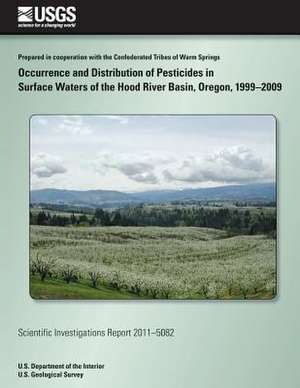Occurrence and Distribution of Pesticides in Surface Waters of the Hood River Basin, Oregon, 1999-2009
Autor Whitney B. Temple, Henry M. Johnsonen Limba Engleză Paperback
Preț: 117.58 lei
Nou
Puncte Express: 176
Preț estimativ în valută:
22.50€ • 23.55$ • 18.73£
22.50€ • 23.55$ • 18.73£
Carte disponibilă
Livrare economică 10-24 martie
Preluare comenzi: 021 569.72.76
Specificații
ISBN-13: 9781500485153
ISBN-10: 1500485152
Pagini: 94
Dimensiuni: 216 x 279 x 5 mm
Greutate: 0.24 kg
Editura: CREATESPACE
ISBN-10: 1500485152
Pagini: 94
Dimensiuni: 216 x 279 x 5 mm
Greutate: 0.24 kg
Editura: CREATESPACE
